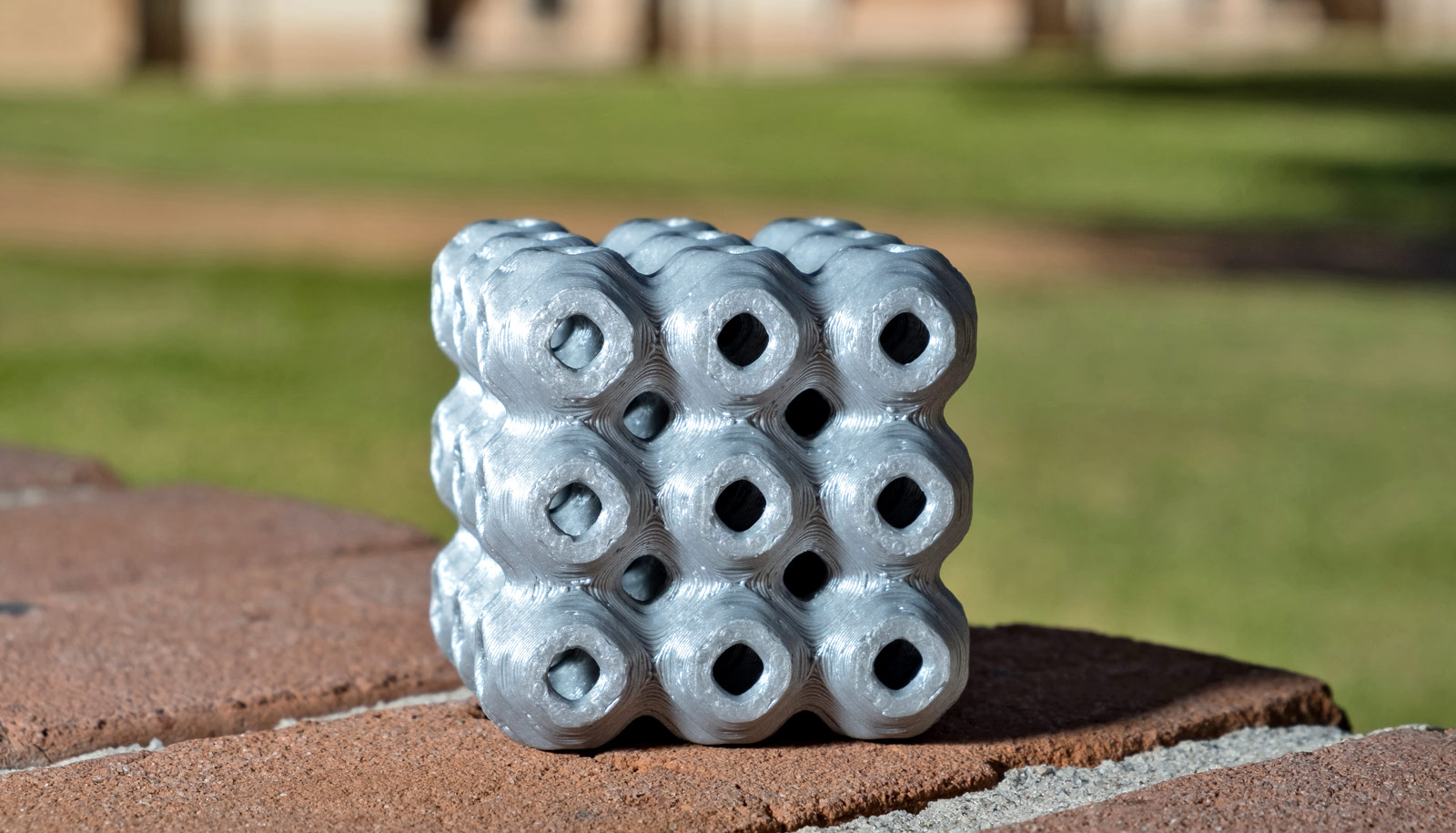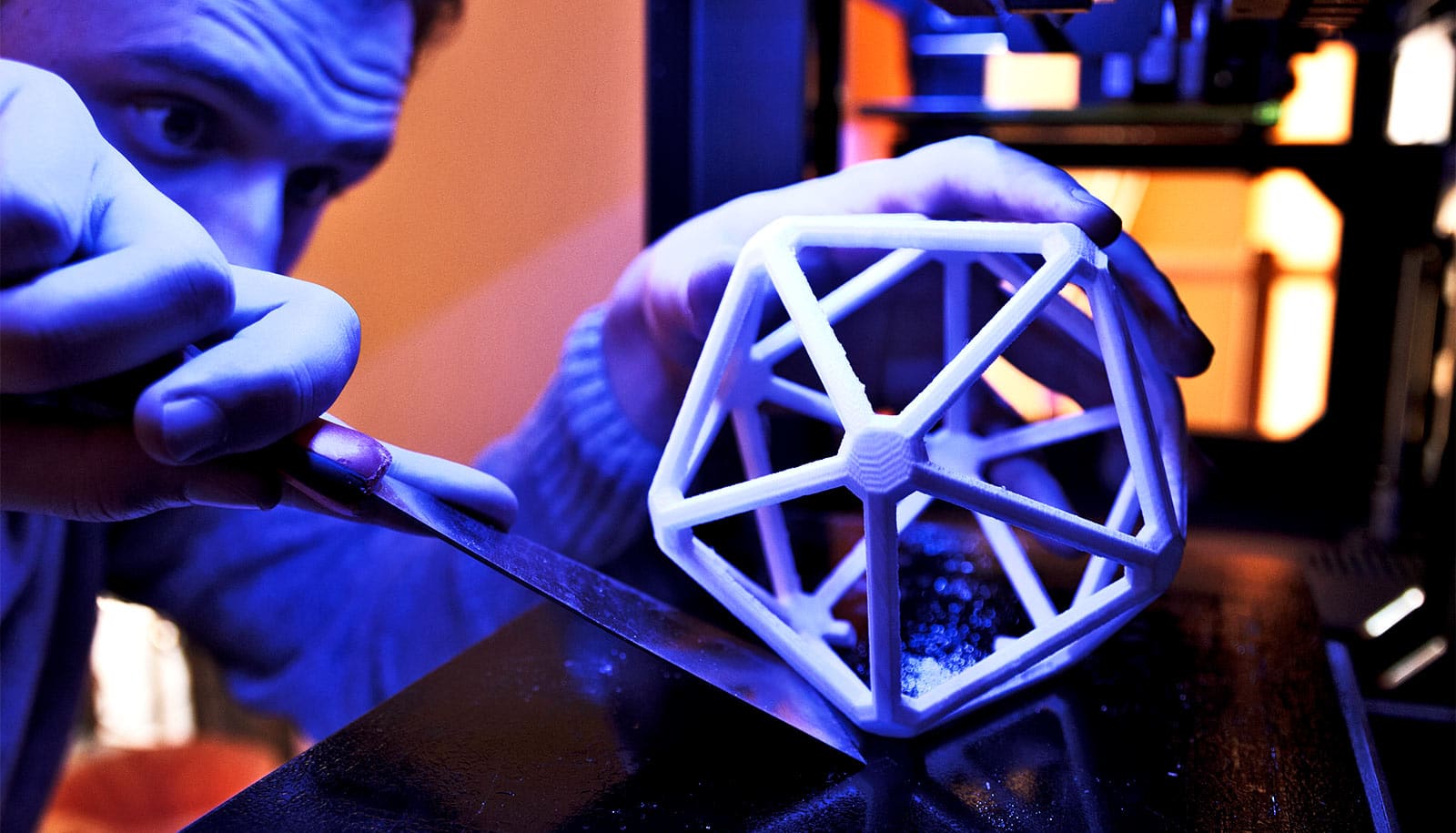Engineers are using 3D printers to turn largely theoretical structures into strong, light and durable materials with complex, repeating patterns.
The porous structures called schwarzites are designed with computer algorithms, but Rice University researchers found they could send data from the programs to printers and make macroscale, polymer models for testing. Their samples strive to use as little material as possible and still provide strength and compressibility.
The results, reported in Advanced Materials, are works of art that may someday lead to nanoscale electronic devices, catalysts, molecular sieves, and battery components, and on the macroscale could become high-load-bearing, impact-resistant components for buildings, cars, and aircraft.
It may even be possible to one day print an entire building as one schwarzite “brick.”
‘Everything is curved’
Schwarzites, named after German scientist Hermann Schwarz, who hypothesized the structures in the 1880s, are mathematical marvels that have inspired a large number of organic and inorganic constructs and materials. The discovery at Rice of the Nobel Prize-winning buckminsterfullerene (or buckyball) provided further inspiration for scientists to explore the design of 3D forms from 2D surfaces.
“You don’t want things to break catastrophically; you want them to break slowly.”
The structures remained theoretical until 3D printers provided the first practical way to make them. The Rice lab of materials scientist Pulickel Ajayan, in collaboration with researchers at the University of Campinas, São Paulo, investigated the bottom-up construction of schwarzites through molecular dynamics simulations and then printed those simulations in the shapes of polymer cubes.
“The geometries of these are really complex; everything is curved, the internal surfaces have negative curvature, and the morphologies are very interesting,” says Rice postdoctoral researcher Chandra Sekhar Tiwary.
“Schwarzite structures are very much the same. The theory shows that at the atomic scale, these materials can be very strong. It turns out that making the geometry bigger with polymer gives us a material with a high load-bearing capacity.”
The structures also have excellent deformation characteristics. “The way a material breaks is important,” Tiwary says. “You don’t want things to break catastrophically; you want them to break slowly. These structures are beautiful because if you apply force to one side, they deform slowly, layer by layer.
5 ways 3D printing could totally change medicine
“You can make a whole building out of this material, and if something falls on it, it’s going to collapse slowly, so what’s inside will be protected.”
Beyond blocks
Because they can take a variety of forms, researchers limited their investigation to primitive and gyroid structures, which have periodic minimal surfaces as originally conceived by Schwarz.
In tests, both transferred loads across the entire geometry of the structures no matter which side was compressed. That held true in the atom-level simulations and for the printed models.
That was unexpected, says Douglas Galvão, a professor at the University of Campinas who studies nanostructures through molecular dynamics simulations.
“It is a little surprising that some atomic-scale features are preserved in the printed structures. We discussed that it would be nice if we could translate schwarzite atomic models into 3D printed structures. After some tentatives, it worked quite well.”
The next step will be to refine the surfaces with higher-resolution printers and further minimize the amount of polymer to make the blocks even lighter. In the far future, they envision printing 3D schwarzites with ceramic and metallic materials on a grander scale.
3D printing gives new shape to math’s ‘moving sofa’
“There’s no reason these have to be blocks,” says coauthor and Rice graduate student Peter Owuor. “We’re basically making perfect crystals that start with a single cell that we can replicate in all directions.”
The Air Force Office of Scientific Research and its Multidisciplinary University Research Initiative, the São Paulo Research Foundation, and the Center for Computational Engineering and Sciences at the State University of Campinas supported the work.
Source: Rice University



